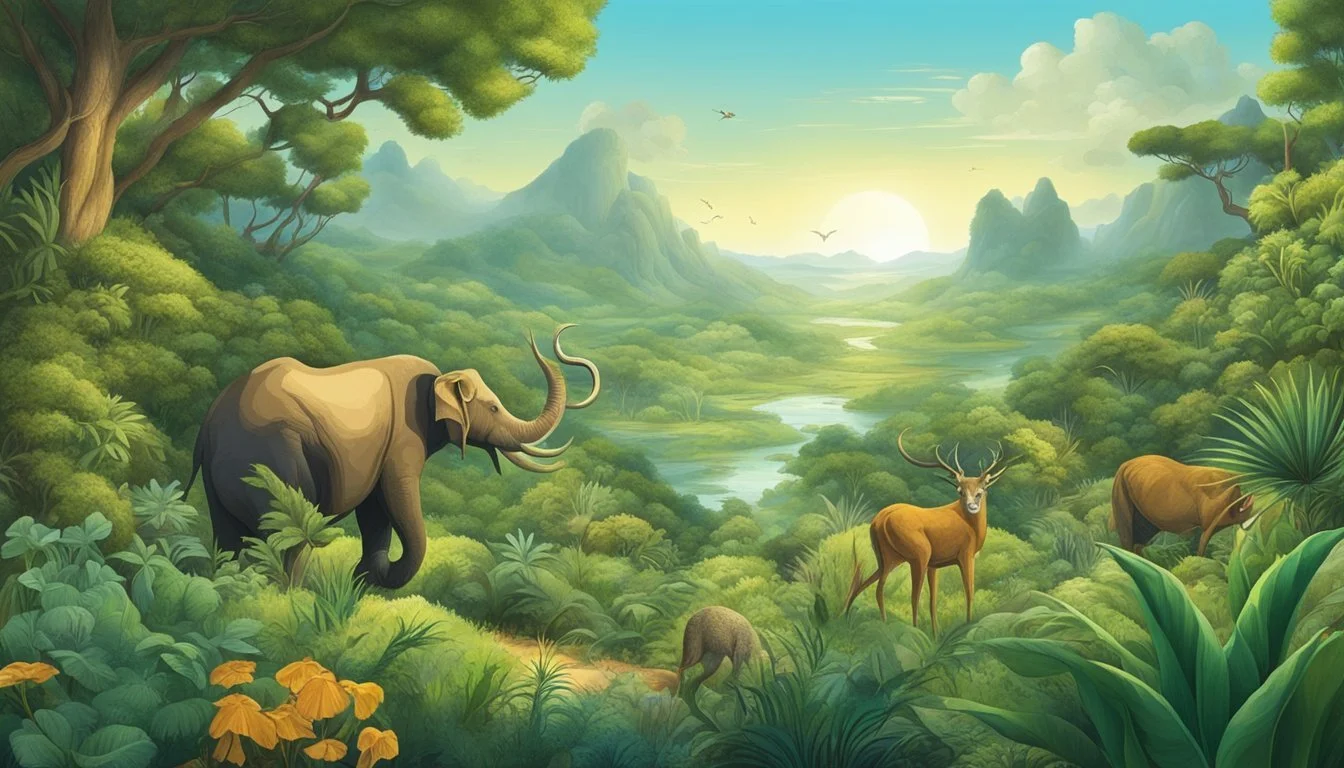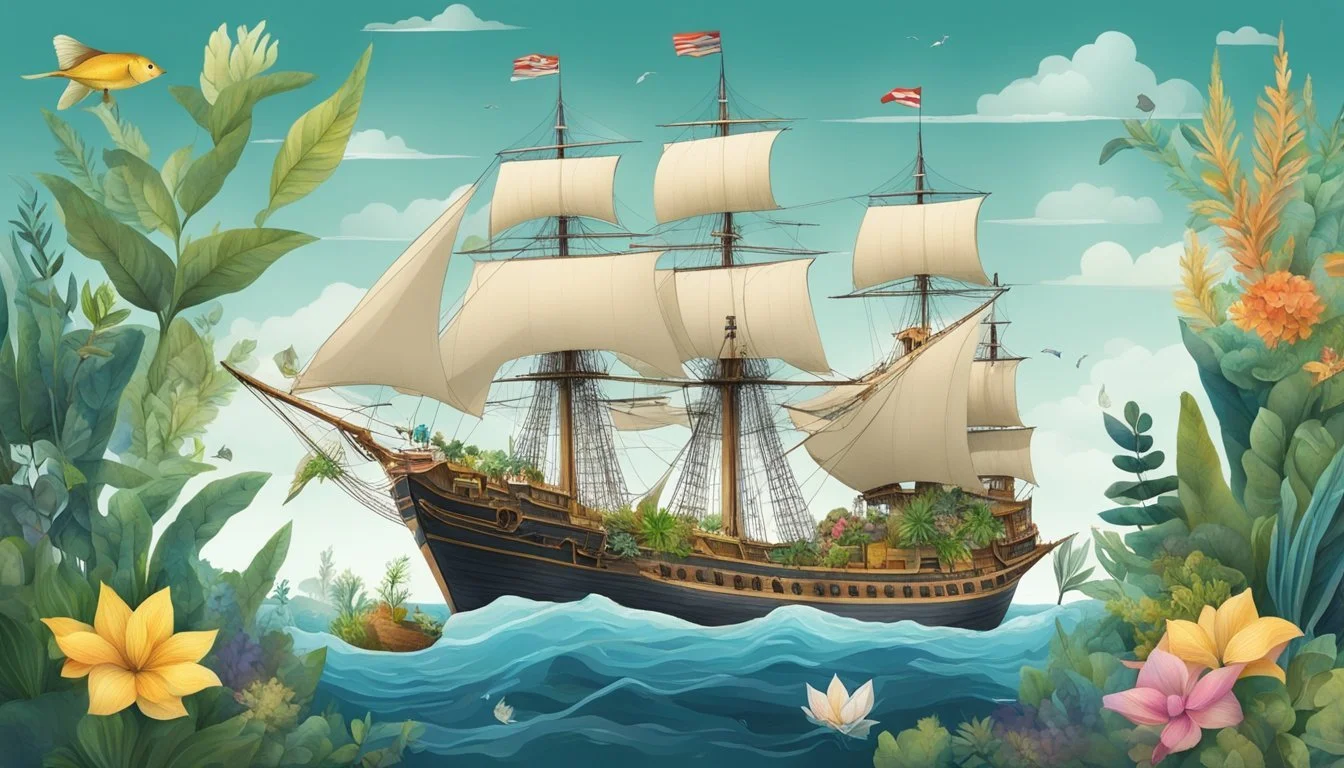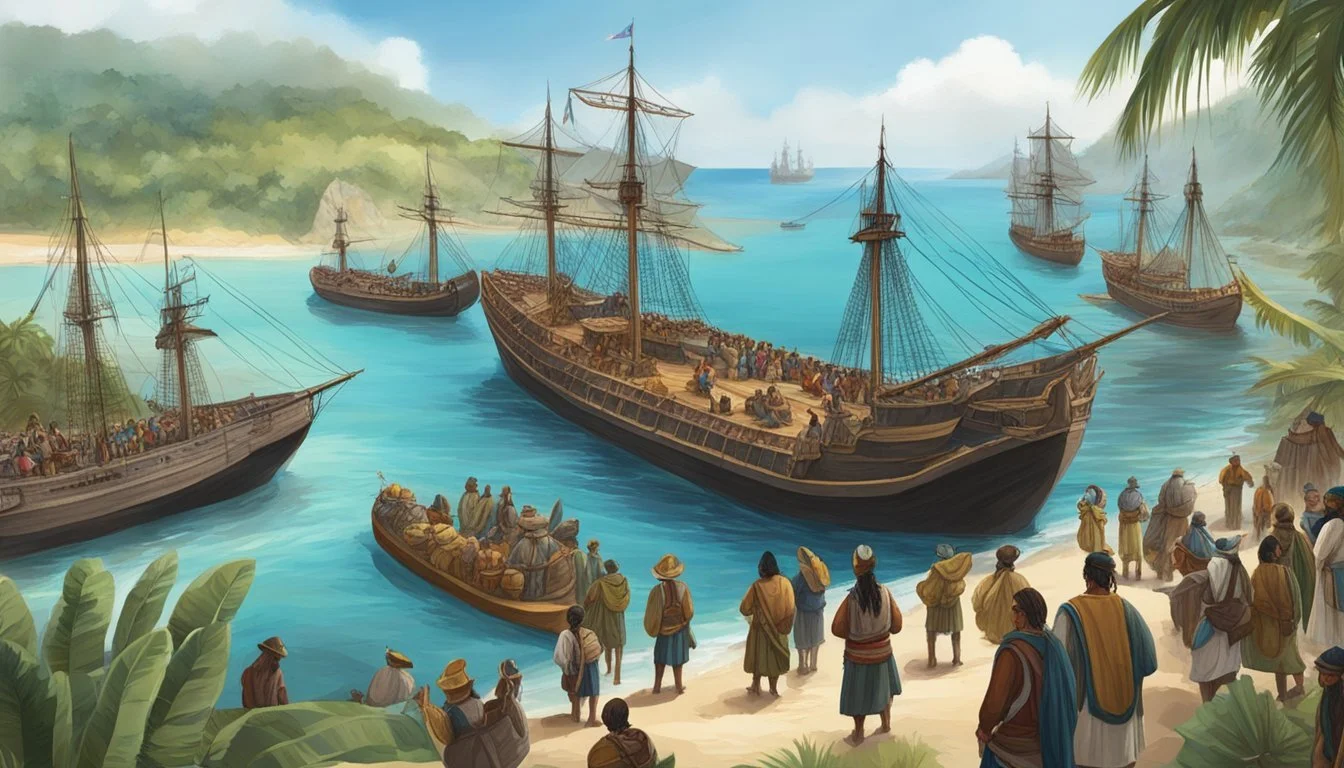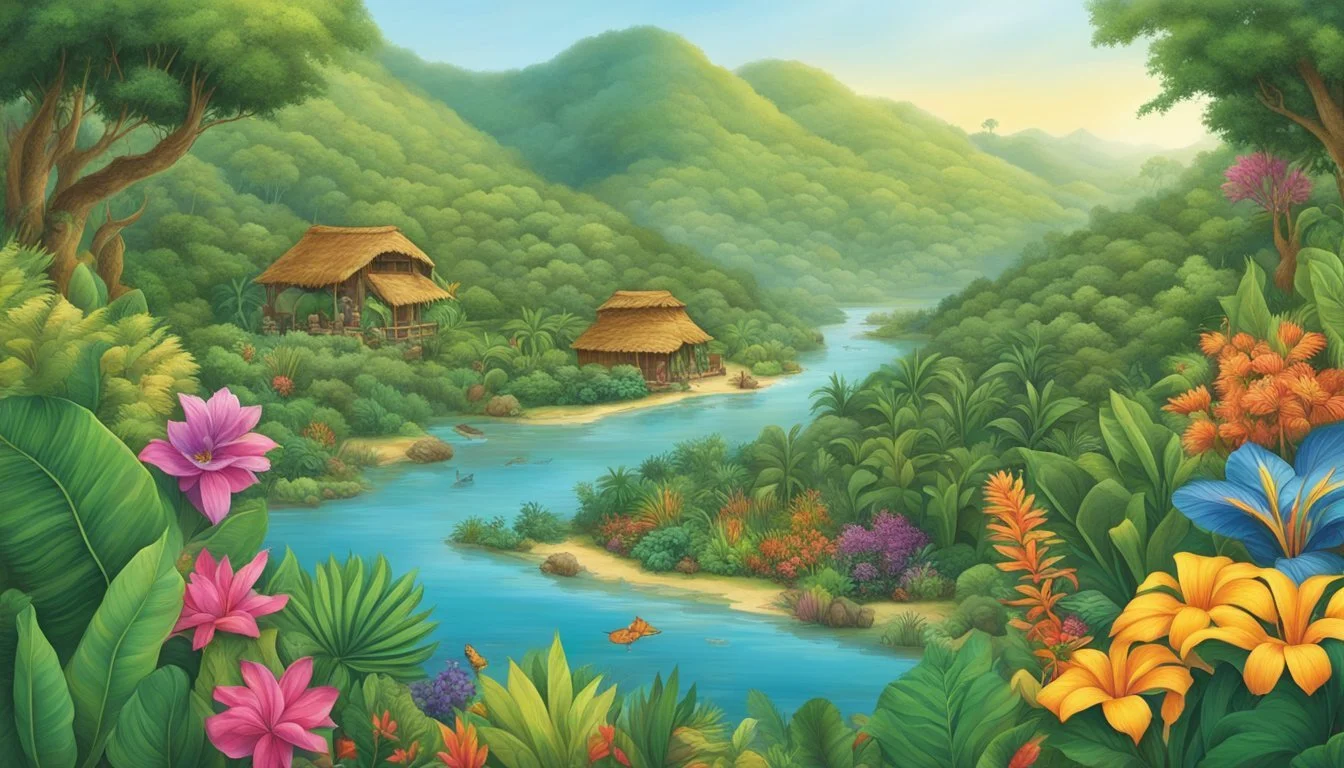9 Films Analyzing the Impact of the Columbian Exchange
A Cinematic Journey Through Historical Transformation
The Columbian Exchange, a pivotal event in world history, has captivated filmmakers and audiences alike. This phenomenon, sparked by Christopher Columbus's voyages in the late 15th century, led to a massive transfer of plants, animals, diseases, and ideas between the Old and New Worlds. Films exploring the Columbian Exchange offer viewers a visual journey through this transformative period, shedding light on its far-reaching consequences.
From historical dramas to documentaries, various cinematic works have tackled the complex dynamics of the Columbian Exchange. These films delve into the cultural, ecological, and economic impacts of this global interaction, presenting diverse perspectives on its legacy. By examining nine such films, viewers can gain a deeper understanding of how this exchange shaped the modern world and continues to influence our lives today.
1) '1492: Conquest of Paradise' by Ridley Scott
Ridley Scott's '1492: Conquest of Paradise' offers a nuanced portrayal of Christopher Columbus's voyage to the Americas. Released in 1992 to coincide with the 500th anniversary of Columbus's expedition, the film stars Gérard Depardieu as the Italian explorer.
The movie presents Columbus as a complex figure, departing from traditional depictions. It explores the impact of European contact on indigenous peoples in the New World, highlighting both the cultural exchange and resulting conflicts.
Scott's film stands out for its attempt at historical accuracy while still crafting a compelling narrative. It portrays Columbus as more enlightened than previous interpretations, showing him treating Native Americans with respect.
The film's title alludes to the paradise-like natural beauty of the Americas juxtaposed with the conquest that followed. It delves into the challenges Columbus faced, both during his voyage and in establishing settlements.
'1492: Conquest of Paradise' received mixed reviews but was praised for its cinematography and Vangelis's memorable score. It remains a significant cinematic exploration of the Columbian Exchange and its far-reaching consequences.
2) 'The Mission' directed by Roland Joffé
Roland Joffé's 1986 film 'The Mission' offers a compelling exploration of the Columbian Exchange's impact on South America. Set in the 18th century, the movie follows Jesuit missionaries working with indigenous Guaraní people in the borderlands of Spanish and Portuguese territories.
The film showcases the clash between European colonizers and native populations. It highlights the complex relationships between religion, politics, and cultural preservation during this tumultuous period.
'The Mission' received critical acclaim, winning the Palme d'Or at the Cannes Film Festival. Its stunning cinematography captures the lush South American landscapes, providing a vivid backdrop for the unfolding drama.
Robert De Niro and Jeremy Irons deliver powerful performances as a reformed mercenary and a dedicated priest, respectively. Their characters represent different approaches to missionary work and interactions with indigenous peoples.
The film depicts the Guaraní's struggle to maintain their way of life in the face of European encroachment. It examines the moral dilemmas faced by both colonizers and missionaries as they navigate the changing political landscape.
'The Mission' serves as a poignant reminder of the far-reaching consequences of the Columbian Exchange on native populations and European settlers alike.
3) 'Cabeza de Vaca' directed by Nicolás Echevarría
Nicolás Echevarría's 1991 film 'Cabeza de Vaca' explores the transformative journey of Spanish explorer Álvar Núñez Cabeza de Vaca. The movie depicts his experiences after surviving a shipwreck off the coast of Florida in 1528.
The film follows Cabeza de Vaca as he traverses what would become the American South. It portrays his encounters with Native American tribes and his gradual immersion in their cultures.
Echevarría's work stands out for its unique perspective on the Columbian Exchange. Instead of focusing on large-scale cultural clashes, it examines the personal transformation of a European in the New World.
The movie showcases Cabeza de Vaca's evolution from a conquistador to a shaman figure among the indigenous people. This transformation highlights the complex cultural exchanges that occurred during early European exploration of the Americas.
'Cabeza de Vaca' is notable for its vivid portrayal of Native American customs and beliefs. The film's imagery and storytelling bring to life the mystical aspects of indigenous cultures encountered by the protagonist.
Through its narrative, the film offers a nuanced look at the early stages of cultural contact between Europeans and Native Americans. It illustrates both the challenges and the potential for understanding between different civilizations.
4) 'Apocalypto' directed by Mel Gibson
Mel Gibson's 2006 film 'Apocalypto' offers a unique perspective on pre-Columbian Mesoamerican society. Set in the declining Mayan civilization, the movie follows Jaguar Paw, a young man from a forest village.
The film is notable for its use of Yucatec Maya language, adding authenticity to its portrayal of indigenous culture. Gibson's direction creates a vivid depiction of Mayan life, customs, and religious practices.
'Apocalypto' explores themes of societal collapse and the impact of civilization on indigenous communities. It presents a stark contrast between the forest-dwelling people and the more urbanized Mayan centers.
The film's climax coincides with the arrival of Spanish conquistadors, marking the beginning of the Columbian Exchange. This pivotal moment hints at the impending cultural and ecological changes that would reshape the Americas.
While praised for its intense storytelling and unique cultural portrayal, 'Apocalypto' has faced criticism for historical inaccuracies. Despite this, it remains a thought-provoking exploration of pre-contact Mesoamerican society on the brink of transformation.
5) 'Black Robe' directed by Bruce Beresford
Bruce Beresford's 1991 film 'Black Robe' explores the cultural clash between European missionaries and indigenous peoples in 17th century North America. The movie follows Father Laforgue, a Jesuit priest, on his journey through the Canadian wilderness.
Beresford skillfully portrays the stark differences between the French colonizers and the Native American tribes. The film highlights the spiritual and cultural divide that emerged during the Columbian Exchange.
'Black Robe' examines the complexities of religious conversion and the misunderstandings that arose from differing worldviews. It depicts the challenges faced by both the Jesuit missionaries and the indigenous populations as they attempted to navigate their interactions.
The film's visuals capture the harsh realities of life in colonial North America. Beresford's direction emphasizes the unforgiving landscape and the difficulties of survival in such an environment.
'Black Robe' offers a nuanced perspective on the impact of European contact with the Americas. It avoids simplistic portrayals, instead presenting a complex view of the cultural exchange that occurred during this pivotal period in history.
6) 'The New World' by Terrence Malick
Terrence Malick's 'The New World' offers a poetic portrayal of the early encounters between English settlers and Native Americans in Virginia. The film centers on the story of Pocahontas and the founding of Jamestown in 1607.
Malick's film explores the cultural exchange and conflicts that arose from the Columbian Exchange. It depicts the initial fascination and attempts at cooperation between the two cultures, as well as the eventual breakdown of relations.
The movie showcases the environmental impact of European arrival, contrasting the untouched American landscape with the colonists' attempts to reshape it. This visual juxtaposition highlights the ecological aspects of the Columbian Exchange.
'The New World' also touches on the transfer of ideas and technologies between the Old and New Worlds. It portrays the Native Americans' curiosity about European tools and customs, while also showing the settlers' reliance on indigenous knowledge for survival.
Through its focus on personal relationships, particularly that of Pocahontas and John Smith, the film examines the human dimension of cultural collision. It illustrates how individual connections could bridge, yet ultimately not overcome, the vast differences between the two worlds.
7) 'Even the Rain' directed by Icíar Bollaín
'Even the Rain' is a 2010 drama film that intertwines past and present struggles of indigenous people in Bolivia. Directed by Icíar Bollaín and written by Paul Laverty, the film explores the impact of colonization and modern-day exploitation.
The story follows a film crew making a movie about Christopher Columbus in Bolivia. As they shoot scenes depicting historical events, a real-life water crisis unfolds around them.
Bollaín's film draws parallels between the exploitation of indigenous people during the colonial era and contemporary issues of resource privatization. The water protests in Cochabamba serve as a backdrop, highlighting ongoing conflicts over natural resources.
'Even the Rain' features an international cast, including Gael García Bernal and Luis Tosar. Their characters grapple with ethical dilemmas as they witness the unfolding social unrest.
The film received critical acclaim for its nuanced portrayal of complex issues. It skillfully blends historical reenactments with modern-day events, creating a thought-provoking narrative about the lasting effects of colonialism.
Through its multi-layered storytelling, 'Even the Rain' offers a unique perspective on the Columbian Exchange and its long-term consequences for indigenous communities.
8) 'Guns, Germs, and Steel' inspired documentary series
The National Geographic Society produced a documentary series based on Jared Diamond's influential book "Guns, Germs, and Steel" in 2005. This three-part series aired on PBS, bringing Diamond's theories to a wider audience through visual storytelling.
The documentary explores the factors that shaped human societies and led to global inequalities. It features contributions from Diamond himself, along with insights from international historians, archaeologists, and scientists.
Each episode of the series focuses on different aspects of Diamond's work. "Out of Eden" examines early human migrations, while "Conquest" delves into the Spanish conquest of the Incas. The final episode likely covers the spread of diseases and technological advancements.
The series aims to present complex historical concepts in an accessible format. It uses a combination of expert interviews, reenactments, and location footage to illustrate Diamond's arguments about geographical influences on civilizations.
While the documentary received praise for its engaging presentation, it also faced criticism from some academic specialists. These critiques reflect ongoing debates about Diamond's theories in various scientific fields.
9) 'The Other Conquest' directed by Salvador Carrasco
'The Other Conquest' is a 1999 Mexican historical drama film that examines the aftermath of the Spanish conquest of the Aztec Empire in the 1520s. Directed by Salvador Carrasco, the film offers a unique perspective on this pivotal historical event.
The movie centers on the period following the massacre at the Great Temple of Tenochtitlan, now Mexico City. It portrays the complex social, religious, and psychological changes experienced by the indigenous Aztec people during colonization.
Carrasco's film stands out for its focus on the Aztec viewpoint, providing insight into the cultural upheaval caused by Spanish arrival. The narrative explores themes of cultural conversion and the clash between two vastly different civilizations.
Through its cinematography, 'The Other Conquest' captures the tension and uncertainty of first encounters between the Aztecs and Spanish. Long, slow shots depict nervous meetings between these two alien parties, highlighting the human aspect of this historical confrontation.
The film serves as a powerful artistic representation of a significant historical period. It gives voice to the indigenous people whose culture and way of life were profoundly altered by the Columbian Exchange.
Historical Context of the Columbian Exchange
The Columbian Exchange marked a pivotal moment in global history, fundamentally altering ecosystems, economies, and societies across continents. This large-scale transfer of plants, animals, cultures, human populations, technology, and diseases between the Old and New Worlds reshaped the course of human civilization.
Origins and Definition
The term "Columbian Exchange" was coined by historian Alfred Crosby in the 1970s. It refers to the widespread transfer of resources between the Eastern and Western hemispheres following Christopher Columbus's 1492 voyage to the Americas.
This exchange began in earnest with European exploration and colonization of the New World. It intensified over subsequent centuries as trade routes expanded and colonial powers established footholds in the Americas.
The Columbian Exchange wasn't a single event, but rather an ongoing process that continued well into the 19th century. Its impacts were far-reaching and often unforeseen, reshaping agriculture, cuisine, population dynamics, and the balance of global power.
Major Elements Exchanged
The Columbian Exchange involved a vast array of biological and cultural transfers. Plants like potatoes, tomatoes, and corn traveled from the Americas to Europe, while wheat, rice, and coffee moved in the opposite direction.
Animals such as horses, cattle, and pigs were introduced to the New World, dramatically altering Native American societies. European settlers encountered new species like turkeys and llamas.
Diseases played a tragic role. Smallpox, measles, and influenza devastated Native American populations who lacked immunity. Some researchers suggest syphilis may have traveled from the Americas to Europe.
Cultural exchanges included new technologies, religious ideas, and artistic influences. The transfer of crops and livestock reshaped agricultural practices and diets on both sides of the Atlantic.
Human Resources Manager
Cultural Impacts of the Columbian Exchange
The Columbian Exchange reshaped cultures on both sides of the Atlantic. Native societies faced profound disruptions, while European ways of life underwent significant transformations.
Influence on Native Cultures
Native American cultures experienced dramatic changes due to the Columbian Exchange. European colonization introduced new religions, particularly Christianity, which altered traditional beliefs and practices.
The influx of European goods like metal tools and firearms transformed indigenous economies and power structures. Many Native societies adopted these technologies, leading to shifts in hunting, warfare, and social hierarchies.
European diseases decimated Native populations, devastating entire communities and disrupting cultural transmission. This demographic collapse weakened traditional knowledge systems and social structures.
European Cultural Changes
European societies were also deeply impacted by the Columbian Exchange. New World crops like potatoes, tomatoes, and maize revolutionized European diets and agriculture.
The influx of gold and silver from the Americas fueled economic growth and changed social structures in Europe. This wealth contributed to the rise of capitalism and new merchant classes.
Exposure to Native American cultures influenced European art, philosophy, and political thought. Ideas about natural rights and critiques of European society emerged from these encounters.
European expansion into the Americas sparked a new era of global trade and cultural exchange. This led to the development of multicultural port cities and the rise of new creole cultures.





